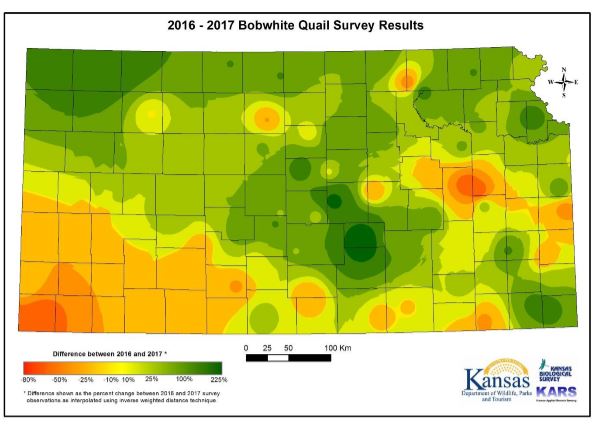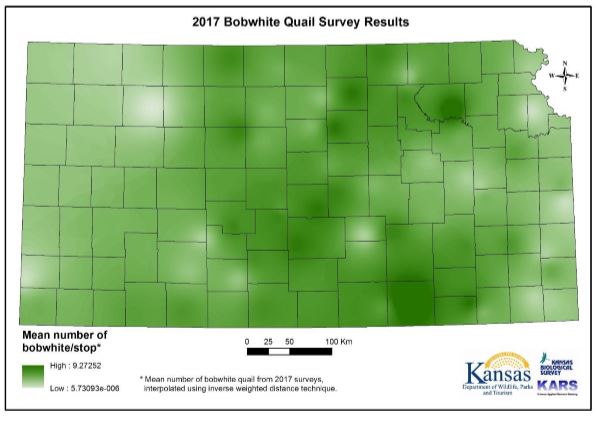By Jimmy Forman, Quail Forever Public Relations Specialist Intern
All signs and whistles point to another successful year for bobwhite quail populations in Kansas. After the 2017 preliminary survey counts were conducted, the number of whistles heard represented a statewide increase of three percent from 2016.
The Quail Whistle Survey represents the two important life stages for bobwhite populations in the state:
1 - Over-winter survival for the population
2 - The previous breeding season’s success
Spring whistle counts do not typically predict fall populations with acute accuracy. But they do provide an index for the potential breeding population available to put even more quail on the ground during the nesting season.
The results of the 2017 Kansas Quail Whistle Survey were as follows:
Flint Hills: +8 percent
Glaciated Plains: +10 percent
Osage Cuestas: -6 percent
Northern High Plains: +122 percent
Smokey Hills: +40 percent
South-Central Prairies: +9 percent
Southern High Plains: -56 percent
Kansas continues to have one of the best bobwhite populations in the country, and is among the top three states for quail harvest. Average snowfall last winter and well-timed spring precipitation helped some individual routes see increased whistle counts of over 140% compared to 2016.
The combination of good production conditions last summer and the mild winter produced strong quail populations coming into the nesting season this year. A heavy snowstorm in western Kansas the first weekend of May could have caused high mortality in the historically outstanding Southern High Plains, though.
Brood survey data from late July and August that is summarized in early September will provide a better estimate for hunters looking to visit Kansas this fall. But right now quail hunting prospects are looking positive indeed. The following graphics offer additional insights.
 The greener the better: The above map shows 2017 whistle counts compared to 2016.
The greener the better: The above map shows 2017 whistle counts compared to 2016.
 The darker the green on this map, the more quail whistles were heard in 2017.
The darker the green on this map, the more quail whistles were heard in 2017.
Quail Forever is proud to be a partner of the National Bobwhite Conservation Initiative (NBCI), an organization of twenty-five state fish and wildlife agencies and various conservation organizations aiming to restore wild bobwhite populations. In the winter of 2017, Quail Forever signed a joint memo of understanding (MOU) through the year 2022. The MOU established a framework of cooperation for the organizations to work jointly with state agencies and other groups to promote the restoration of early successional habitat on public and private lands with the most benefit for bobwhite quail and other wildlife.
Photo Credits:
Main Image – Quail Coalition.
Subsequent Images – Kansas Department of Wildlife, Parks, and Tourism.